The flag of the Central African Republic stands as a vibrant emblem of the nation’s unity, resilience, and hope. Distinctive in design, it reflects the country’s diverse heritage and aspirations for a harmonious and progressive future.
Central African Republic Flag
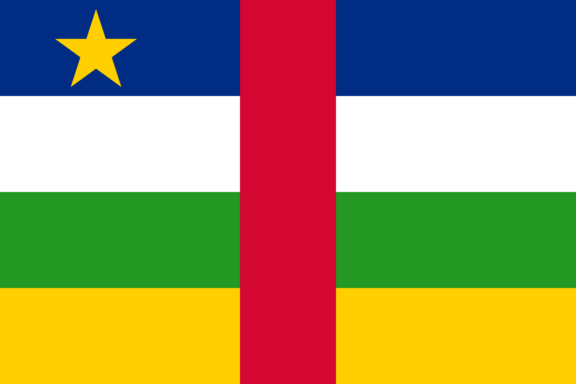
The flag of the Central African Republic features a unique design with four horizontal stripes and a bold vertical stripe intersecting them. At the top left corner, a single five-pointed star adds a distinct focal point.
The flag’s layout, intersecting stripes, and central star symbolize the nation’s identity and journey through history. This design sets the flag apart, making it a recognizable and meaningful national and international symbol.
Central African Republic: Color Palette
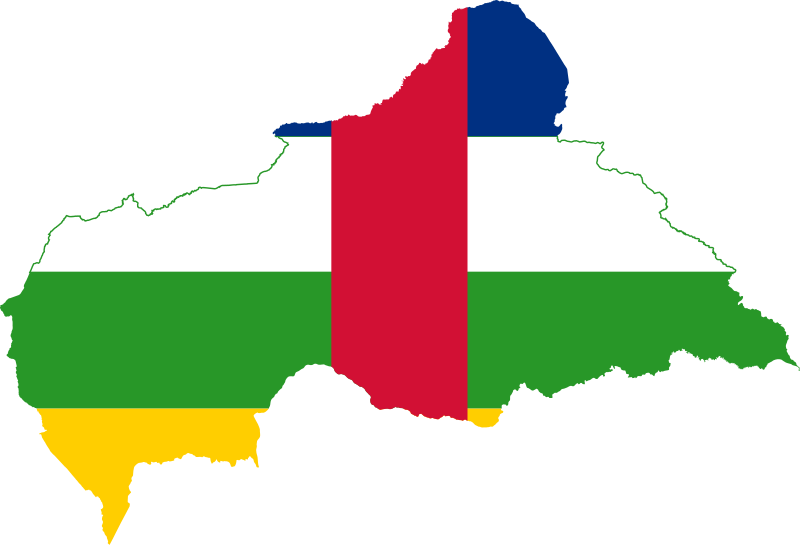
Central African Republic Flag Emoji: 🇨🇫
The color palette of the Central African Republic’s flag is a harmonious blend of distinct hues, each selected for its deep symbolic resonance.
This thoughtful curation of colors combines traditional African tones with universal symbols of harmony and national character, creating a visually striking and meaningful array.
Meaning of Each Color
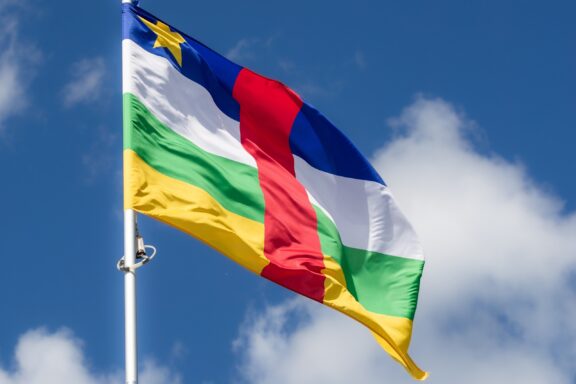
Blue
Blue symbolizes the sky and freedom, embodying the nation’s liberty, glory, and hope aspirations. This color reflects the country’s African heritage and enduring quest for freedom.
White
Representing peace and dignity, white also signifies bravery, purity, and equality. It is a unifying color that embodies the spirit of peace and cooperation among the Central African Republic’s diverse communities.
Green
Green represents hope and faith, symbolizing the country’s rich natural resources, forests, and farmland. It highlights the nation’s connection to its land and the importance of environmental preservation.
Yellow
Yellow, representing tolerance and charity, also signifies the nation’s mineral wealth. The flag’s five-pointed yellow star of independence symbolizes the country’s aspirations for a vibrant and prosperous future.
Red
The red stripe symbolizes the bloodshed in the struggle for independence, a poignant reminder of the sacrifices made for freedom and the resilience of the nation’s people.
Central African Republic Coat of Arms
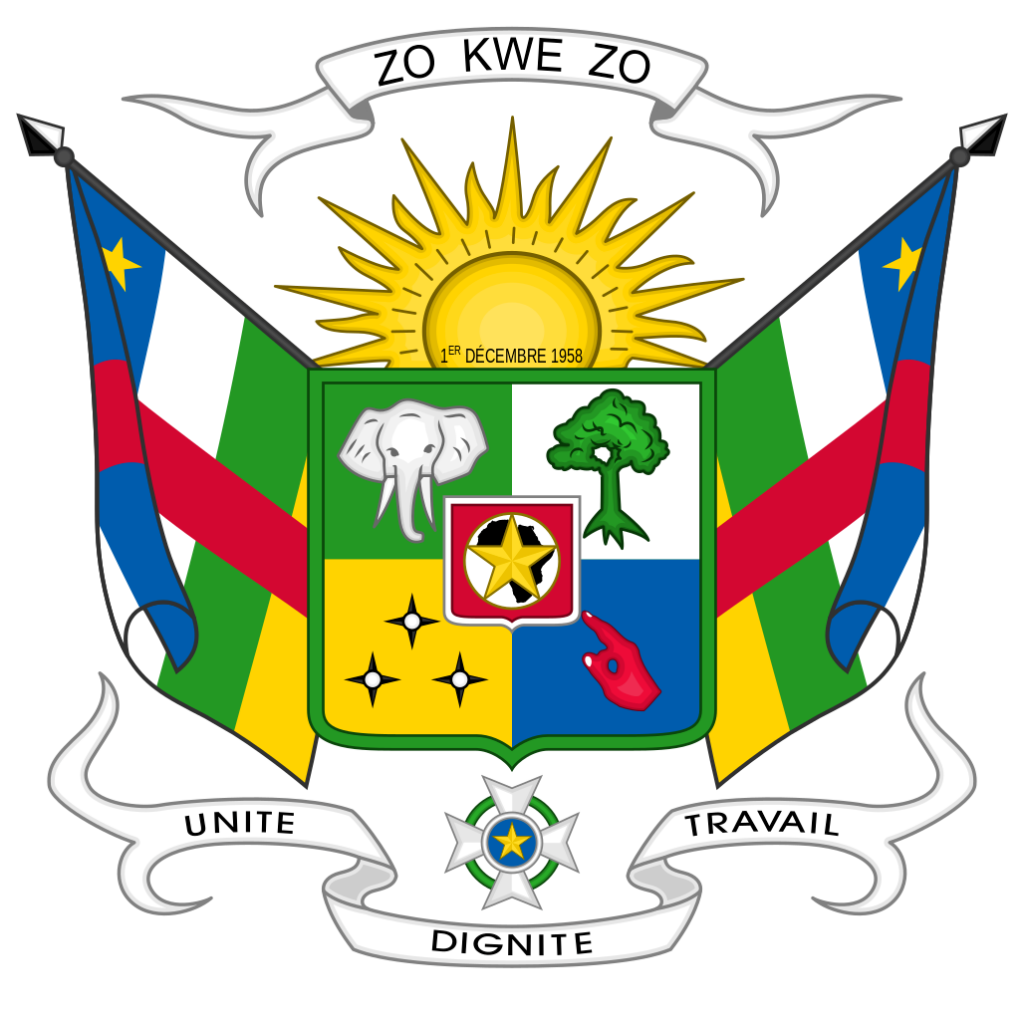
The coat of arms of the Central African Republic encompasses a shield in the center, flanked by two flags, with a sun rising over the shield. It includes banners below and above the shield, along with the Order of Central African Merit badge.
The motto “ZO KWE ZO” in Sango translates to “A man is a man” or “All people are people.” The elephant and baobab tree represent the natural world and the country’s backbone.
The gold star on a map of Africa symbolizes the nation’s location, while the hand symbol was associated with the dominant MESAN party during the arms’ adoption in 1963. The three diamonds in the bottom left quarter represent the country’s abundant mineral resources.
Historical Evolution and the Meaning Behind Changes
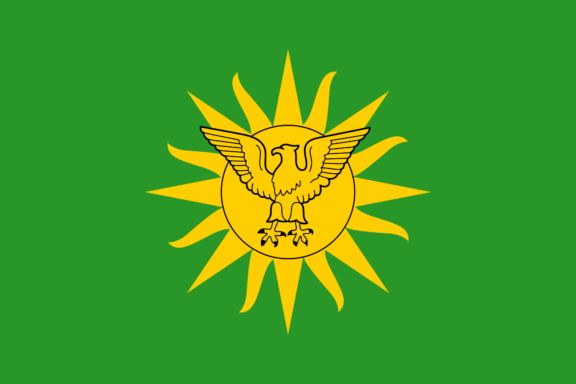
The flag of the Central African Republic, conceptualized by Barthélemy Boganda, the nation’s first Prime Minister, at the dawn of its independence, embodies a profound symbolic narrative.
Designed to symbolize unification and cooperation between Africa and Europe, its distinctive layout reflects a harmonious blend of heritage and aspirations. Including a star denotes the nation’s independence and optimistic outlook toward the future.
The flag has remained consistent in its design since its adoption, signifying a steadfast adherence to the ideals and values it was initially meant to represent, even amidst the nation’s dynamic political and social landscape.
Today, the flag of the Central African Republic stands as a proud emblem of the nation’s enduring spirit, representing its rich history, diverse culture, and unwavering hope for a harmonious and prosperous future.
Overall Symbolic Meaning of the Flag
The flag of the Central African Republic serves as a powerful symbol, encapsulating the nation’s steadfast journey through challenges and its pursuit of harmony and progress. It reflects a deep commitment to bringing diverse cultural narratives together within a shared vision and testament to the nation’s strength in overcoming adversity.
Similar Flags to the Flag of the Central African Republic
In the diverse world of national flags, some strikingly resemble the flag of the Central African Republic. Let’s explore these similar flags and uncover their design and symbolism connections.
Seychelles
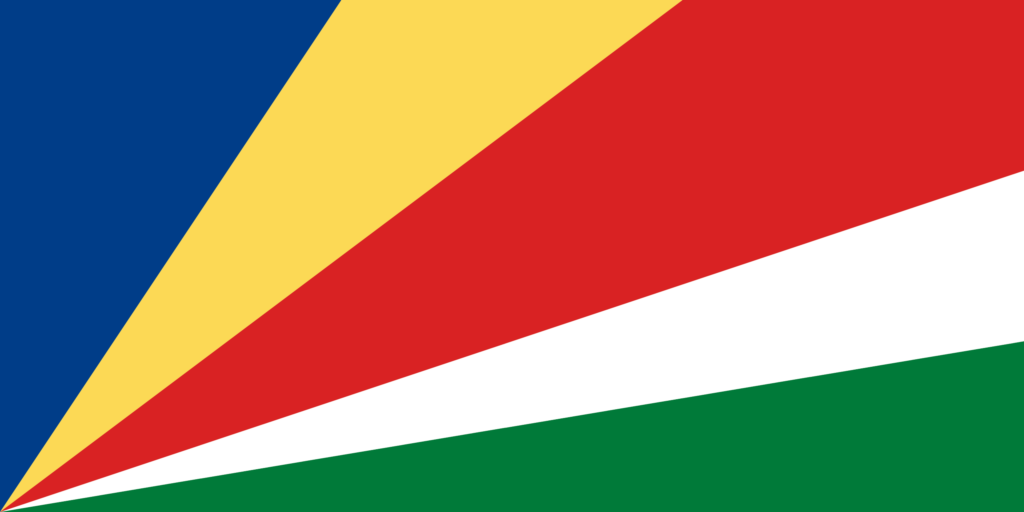
The flag of Seychelles shares a visual resemblance with the flag of the Central African Republic due to its vibrant and colorful design. While the color schemes differ, both flags use striking colors to represent national identities and values.
South Sudan
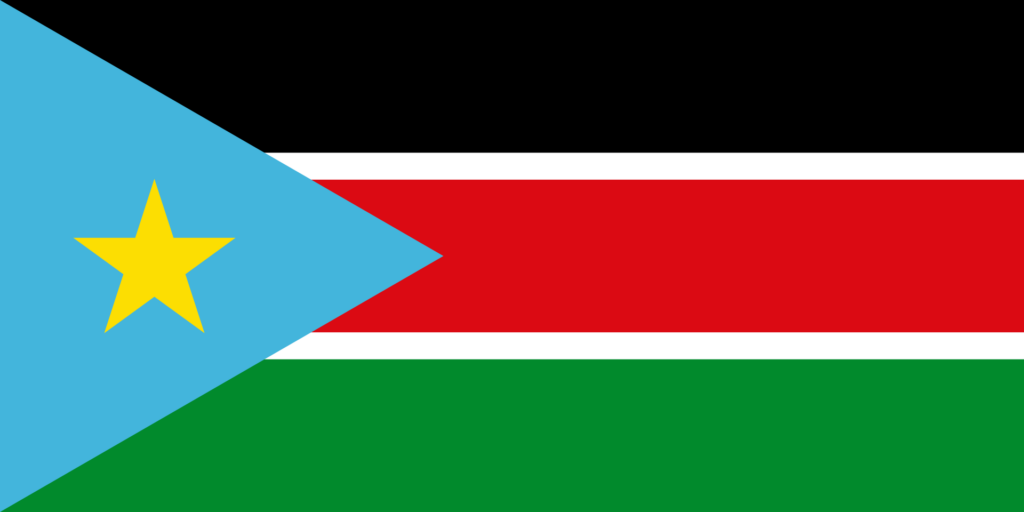
The similarity with the Central African Republic’s flag lies in their shared use of Pan-African colors, representing a mutual history of struggle for independence and a collective aspiration towards harmony and freedom within the African continent.
Senegal
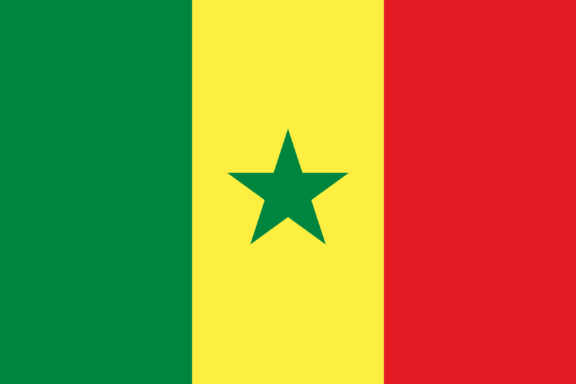
The similarity of Senegal’s flag with that of the Central African Republic stems from incorporating Pan-African colors, reflecting African states’ shared values and aspirations.
This resemblance highlights a collective African identity and a united front in the journey towards sovereignty and unity across the continent.
Conclusion
The flag of the Central African Republic encapsulates the nation’s journey, embodying its values and aspirations. In the global array of flags, it stands distinct, symbolizing African unity and independence. It’s a beacon of pride, hope, and resilience for its citizens, reflecting their collective spirit and vision for the future.